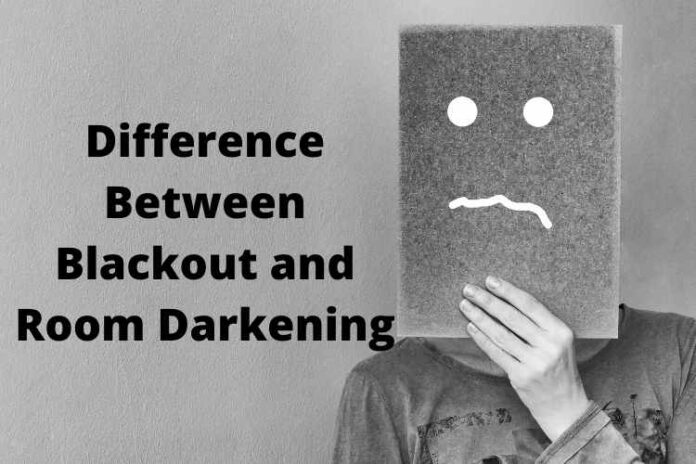Window covering, whether draperies, blinds, or shades, serve two purposes, first, to give privacy, and second, to darken the room for a restful night’s sleep or to screen sunlight during the day. In our houses, we prefer to maintain things warm and inviting. Blinds or shades can be used to dim the light in a room. Light-blocking materials are divided into two categories: Blackout and Room darkening. Both phrases allude to how much light a shade’s cloth lets through, which has an impact on the room’s ambiance and temperature. Both fabrics serve the same purpose: to give privacy and heat management.
In this article, we are going to discuss the Meaning and difference between Blackout and Room darkening.
Meaning of Blackout
As the name implies, blackout shades are a light-blocking and shading solution that allows no light to travel through the fabric. The blackout shades, which are composed of high-quality material that blocks all incoming light, provide the most darkness. Not only do these shades darken the area, but they also provide sound insulation. Blackout shades are ideal for spaces that require total darkness, such as the bedroom or the media room. Blackout shades are an excellent window treatment for folks who work night shifts and need to sleep during the day. These are most typically encountered as curtain lining or drapery textiles in hotels, where they block a lot of light.
RELATED – Difference Between Cartographer and Photogrammetrist
Meaning of Room Darkening
Room darkening shades are a type of window treatment that substantially reduces the amount of light that enters your room. However, unlike blackout blinds, it does not darken your space. These shades dim the area sufficiently to allow you to take a power nap throughout the day or watch TV without glare.
Difference Between Blackout and Room Darkening
1. Window Treatment
Both phrases refer to the amount of light that can flow through the material of a shade. Blackout, on the other hand, is a light-blocking and shading window treatment that allows no light to travel through the cloth, resulting in pitch-black darkness. Room darkening, on the other hand, refers to a window treatment that blocks the majority of the incoming light, resulting in a darkened room that isn’t fully dark like blackout shades.
RELATED – Difference between Cheap and Frugal
2. Light Blocking
The Blackout shades, which are composed of high-quality material that blocks all incoming light, provide the most darkness. These shades are made of a cloth that blocks 100 percent of the light that enters your room, not only darkening it but also providing sound insulation. The room’s darkening shades, on the other hand, employ a cloth or substance that blocks between 95 and 99 percent of the incoming light. Room darkening shades allow some light in while providing a good middle ground between sheer and true blackout drapes.
3. Ideal Use
Blackout shades are ideal for spaces that require total darkness, such as the bedroom or the media room. For people who work night shifts and need to sleep during the day, blackout blinds are an excellent option. For complete privacy, these are most typically found in hotel rooms. Room darkening blinds typically block out 95% of incoming light and dim the room sufficiently to allow you to nap or watch TV throughout the day. For bedrooms or living rooms where light control is crucial, these are a popular option of blinds or drapes.
RELATED – DIFFERENCE BETWEEN HEIR AND BENEFICIARY: DO YOU KNOW A MAJOR DIFFERENCE
Conclusion
In a nutshell, blackout shades are a light-blocking and shading solution that allows no light to travel through the fabric. The blackout shades, which are composed of high-quality material that blocks all incoming light, provide the most darkness. Room darkening shades are a type of window treatment that substantially reduces the amount of light that enters your room.
In last, I hope this article is sufficient enough to clarify the Difference Between Blackout and Room Darkening.


